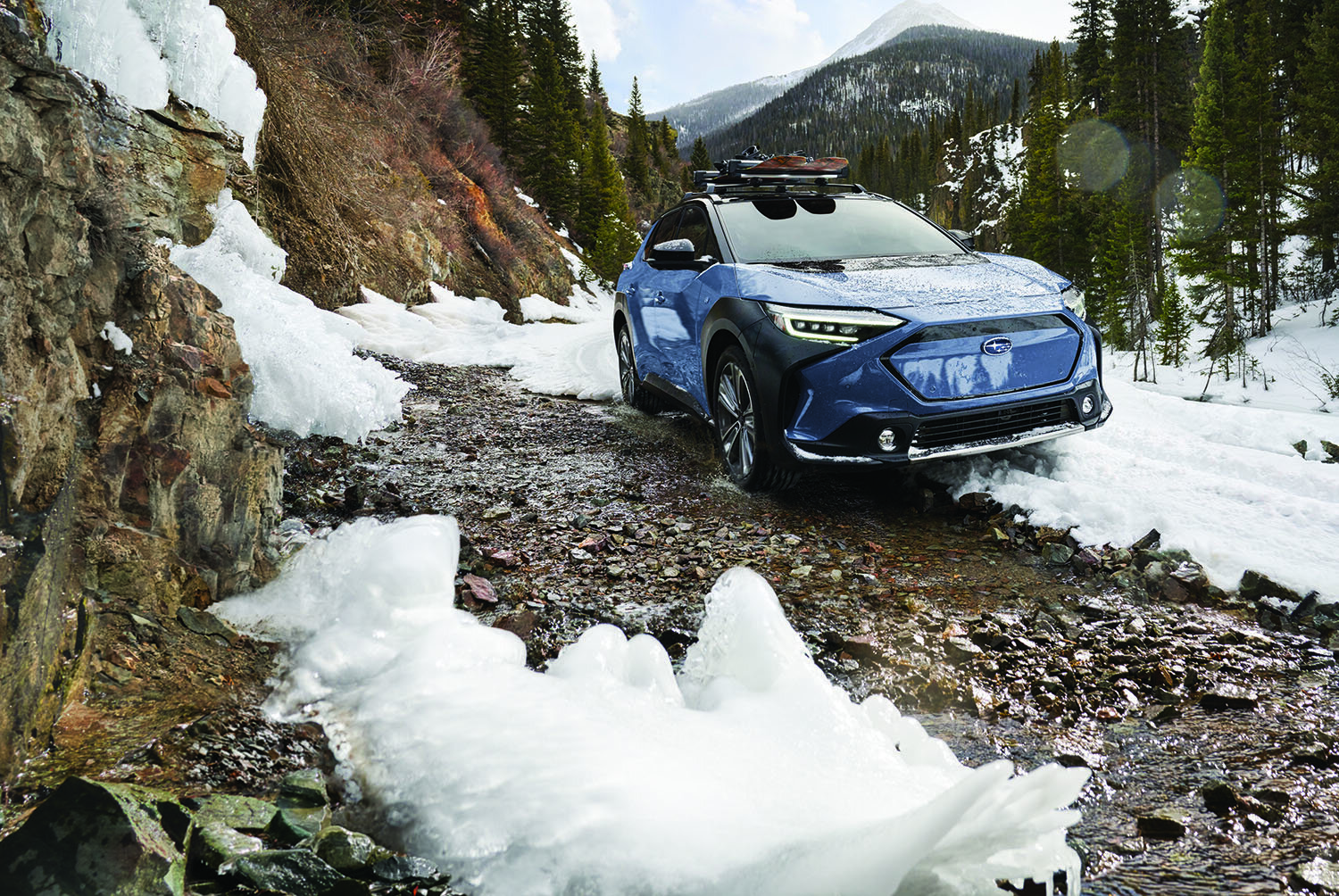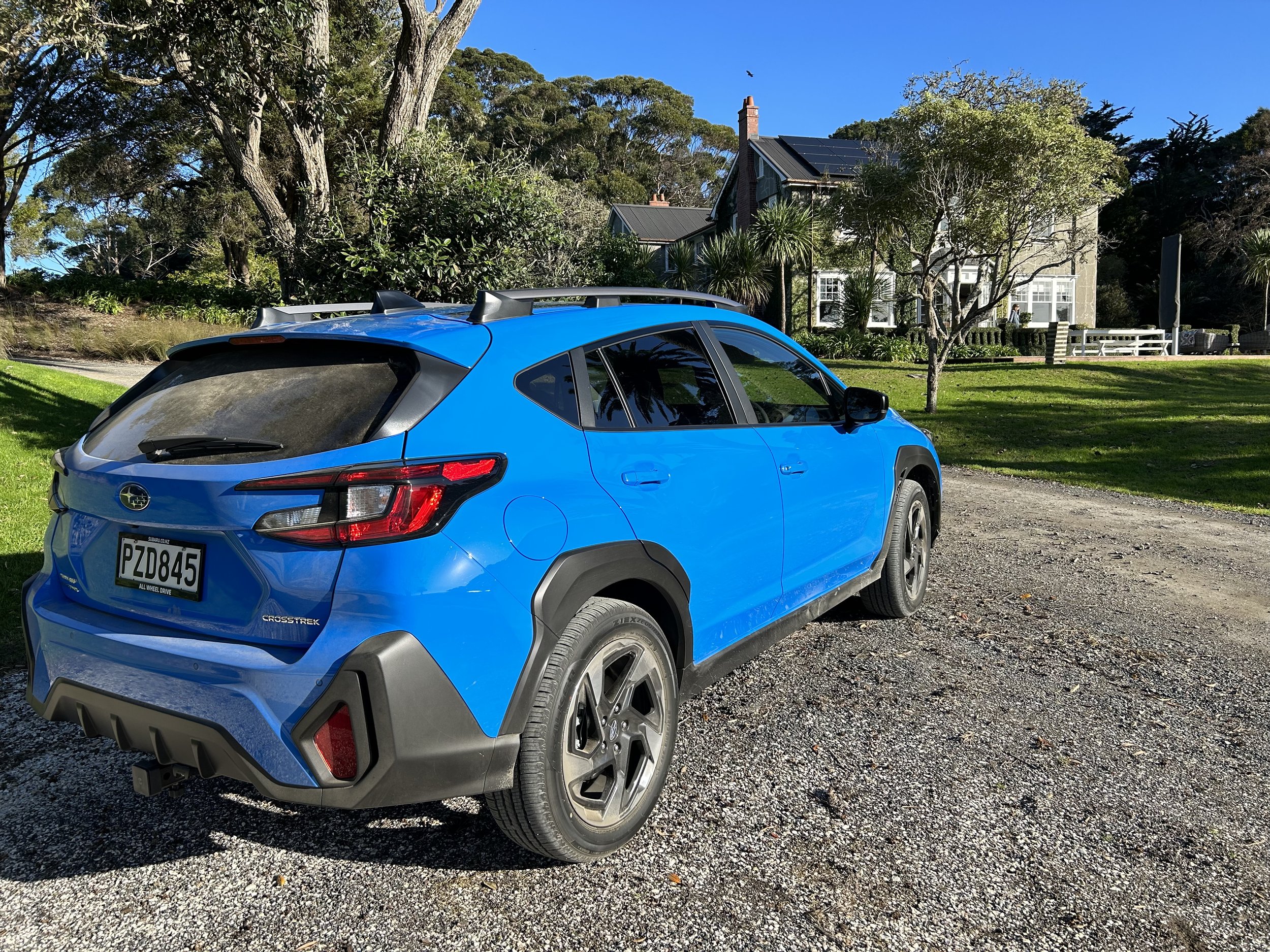Subaru seeking electric salvation
/The burden of CO2 emissions penalties is weighing heavily - even its hybrid cannot catch a break. Might the solution be more than home-grown?
INCLUSION of additional electrics under hastened development to join the again-delayed Solterra (above) will do much to ease an emissions issue for Subaru NZ - might its distributor’s adoption of two other brands also be beneficial?
A core legislative quirk of the Clean Car rules Government has enacted to steer distributors to favour selling low to no CO2 cars could be leveraged to the Japanese make’s advantage by its owner, Inchcape.
The giant United Kingdom-listed vehicle distributor and retailer, having long held rights to Subaru in New Zealand, has announced expansion of local interests, taking over national distribution of South Korea’s SsangYong and LDV, a division of China’s SAIC.
This could make for a positive play for Subaru NZ, which at moment is being hammered by Clean Car Discount (CCD) and Clean Car Standard (CCS) rules that penalise high CO2 counts.
The latter legislation in pinpointing distributors, can leave those with multiple marques to use good scores from some to ease the burden of poor-scoring others.
SsangYong, which might yet assume nationally as KG Motor, a new name adopted in South Korea, and LDV are immediately handy, because of their respective commitments to electric.
Two of the LDV battery pure vehicles here - the mains-fed EVT60 utility and Mifa9 people carrier - are in niches free of rivals. SsangYong also has a fully electric version of its Korando sports utility in right hand drive.
There’s a twist in that the SsangYong/LDV actions involves the parent, Inchcape UK, whereas Subaru NZ is in hands of Inchcape NZ, but that’s likely to be semantic to allowing the Japanese brand’s local operation to use any credits.
Any such relief would surely be welcomed by the specialist in all-wheel-drive life style and sports models. It is in a deepening hole with CCS now up to full speed.
For the past year, CCD has been taxing high emitting passenger models at time of registration but the CCS has potential to layer additional penalty on high CO2 emitters. Subaru’s boxer engines are in that category, even in the ‘e-power’ hybrid set-up. That drivetrain, which runs in the Forester and will carry from the old XV into the new, now called Crosstrek, will from July 1 haul a $1830 penalty. Subaru has vowed not to apply CCS effect onto Crosstrek prices, but it felt compelled to with Outback XT’s turbocharged petrol.
The best solution to countering CCS is to have a powertrain that earns credits - in short, an electric.
Subaru NZ boss Wallis Dumper (above) is loath to discuss the potentials of Inchcape’s acquisition of LDV and SsangYong from incumbent distributor Great Lake Motor Distributors, as that deal is still being processed.
However, he readily admits the sooner he can have battery product to provide balance, the better.
Subaru’s first electric car, Solterra, is an obvious panacea, but getting it here is not proving anything as easy as had been hoped.
A co-development with Toyota, this medium five-seater - similar in look to the Forester and slightly larger than Crosstrek - keeps slipping off the local launch schedule, for the same reasons that seem to be keeping its Toyota equivalent, the bZ4X, out of local reach.
Primarily, it was held up by need to rectify an embarrassing design glitch which stalled the cars’ mutual assembly line for more than a month.
Once it had found a fix to that problem - which literally threatened to cause the wheels to come off - there was an airbag issue. Because of this, both brands rejigged their production allowances to give priority to much higher volume markets.
As result, having initially intended for release last year, then slated for launch in March, Solterra is now set to come in December - fingers’ crossed.
Dumper acknowledged during the week he cannot rule out a further delay.
Exasperated? More than just a little, not least when he already has more than 50 firm buyers, smitten by the demonstration example that toured the country.
“We needed Solterra yesterday.”
Subaru Japan has hastened development of three more battery cars - at least one of which will be bespoke, rather than a co-share with its technology partner - with intent to have all on the road by 2026. It expects the main Oizumi factory be making 200,000 annually by 2028.
By then they will be complimented by what the factory is calling ‘strong hybrids’ - a wry acknowledgement, perhaps, that the present ‘e-power’ type, which marries a small electric motor and modest-sized battery to a 2.0-litre petrol, is anything bit.
In Crosstrek (below) it lends marginal 0.7 litres per 100km fuel economy benefit over the alternate fully petrol 2.0-litre choice and emissions are only slightly lower.
For all that, Subaru NZ believes the ‘e-power’ hybrid will become a stronger choice and has accordingly rejigged the Crosstrek family to leverage this.
In meantime, Dumper has conceded that his operation, Subaru Japan and Inchcape have all been surprised about the swift rate of battery-involved vehicle adoption here.
“The speed in which change has happened, maybe through Government intervention … but who would have thought even three years ago that over a third of the cars we’re selling were electrified,” said Dumper.
“If manufacturers could get supply, it would probably be a lot more.
“And yet, some of our own Subaru dealers, they’re going ‘oh, no it won’t catch on’ … and then you talk to other brands and they go ‘ oh, who knows?’. And now it’s happened. And the whole world is going that way,” he added.
“Inchcape globally, we’ve got Asia, Europe, Latin America, and nobody in the group can believe how rapidly New Zealand is transitioning. And a lot of it is to do with Government intervention.”
A good thing? Dumper believes the Beehive strategy actually limits customer choice, when buyers are almost forced into a specific type of car, quipping: “for some strange reason Subaru Japan did not plan around the New Zealand Labour Government’s plans.”
In the here and now, brands with electrification are ahead of the game. Japanese brands have been accused of being tardy. Dumper says he might sound biased in thinking “they will have a plan.”
Subaru Japan has stepped up its planning in accordance with the step up in global trends.
“We know the Subaru plan and all I can say is that, from now and probably for each year for the next three to five years, we are going to see so much change, it’ll likely catch people out.”
Subaru has previously indicated the current generation of cars will be the last in fully international combustion engined (ICE) form. Latest information from Japan cements this.
“We have ICE vehicles, but we also have Solterra coming - we needed it yesterday, but we’ll get there. The great thing is we have a whole new line-up of BEVs and strong hybrids coming, and from 2030 onwards we’ve got more.”





















